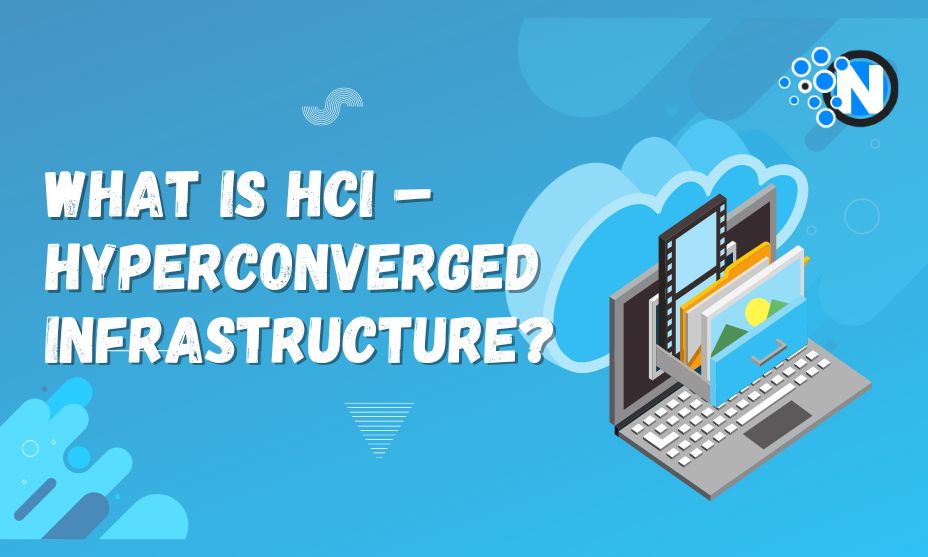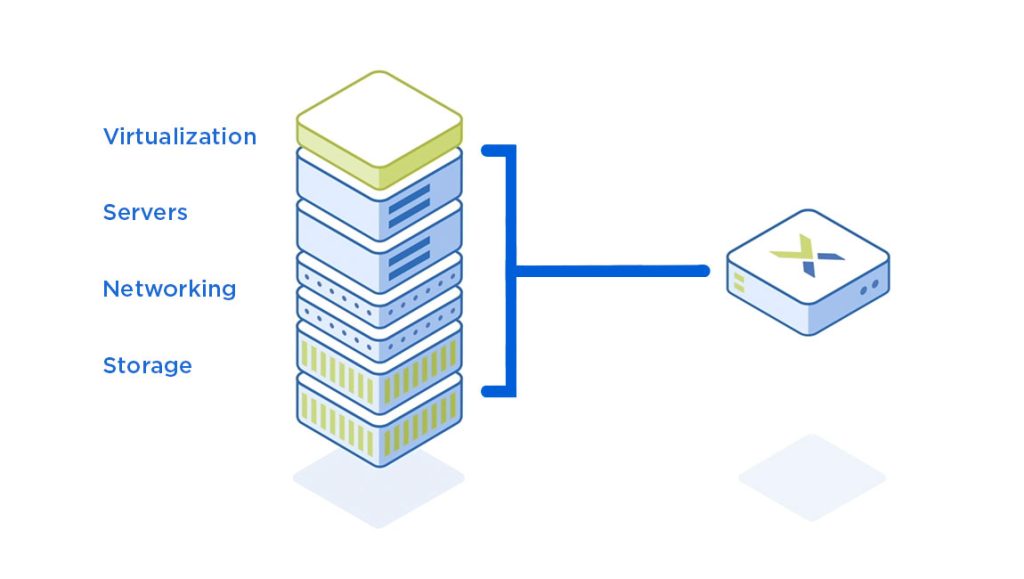What is HCI – Hyperconverged Infrastructure?

Hyperconverged Infrastructure (HCI) has become a buzzword in the tech industry today. It’s been applied in different computing technologies. With so many definitions out there, most IT professionals seeking for HCI solutions may experience confusion in determining what works for them. In this article, we define HCI and tell you why it’s the best IT solution for your company.
Defining Hyperconverged Infrastructure
Hyperconverged infrastructure refers to software-defined tech infrastructure that virtualizes every element of a traditional hardware system. It combines storage, network, and server resources to create flexible building blocks for data centers. HCI is very similar to converged infrastructure. Both infrastructures combine networking, computing, and storage functions.
However, HCI infrastructures have more agility. They’re more scalable, easier to maneuver and less costly compared to CI infrastructures. Additionally, HCI infrastructures use smaller, flexible building blocks called nodes for better customization. HCI allows for sharing of all management resources as software-defined elements get implemented through the hypervisor.
What Does a Hyperconverged Infrastructure Entail?
HCI helps in simplifying the management of tech resources. Any hyper converged platform has four important software components namely:
- Compute virtualization
- Storage virtualization
- Advanced management
- Compute virtualization
HCIs operate on virtualization software. The software abstracts and pools different resources before allocating them to applications in containers. You can use HCI to create an on-premise cloud storage, extend public clouds or develop hybrid enterprise storage environments. HCI has a wide use case that includes end-user computing, demilitarized zones, business apps, staging, disaster recovery, remote office, and management.
How Can Hyperconverged Infrastructure Benefit Your Company?
Compared to other IT infrastructure models, HCIs offer unique benefits to companies or institutions. Developing a HCI infrastructure can reduce cost and complexity for users, improve operational efficiency, ensure optimization of IT infrastructures, and scale available tech resources quickly. At a high level, HCI models help in improving the effectiveness of IT systems and enhancing energy efficiency within organizations.

Below are additional benefits of using a hyperconverged infrastructure:
- HCI Provides One Integrated System
Hyperconverged infrastructure makes it possible to integrate all software and hardware components of your company’s system into a single system. This means less complexities. It also makes the management of IT components and eradicates the need for separate hardware like switches and routers.
- HCI Boosts System Performance
HCI -based systems have the ability to boost workload performance, even with multiple application types running. The system can handle HDDs and SSDs, which makes it easy to meet performance demands for different workloads, including those relating to virtual desktop infrastructure.
It can accommodate varying workloads without experiencing the I/O blender effect that’s capable of reducing storage performance in virtualized environments. HCI’s software-defined storage is designed to accommodate varying performance needs without requiring hardware reconfiguration. Processing and storage are often within reach, which results in lower latency and less cabling.
- HCI Offers Scalability
For most companies, scalability is among the key considerations when picking an IT infrastructure. The HCI tech model consists of self-sustaining, pre-configured nodes that can be removed or added as needed. The IT system can be small at the beginning but grow with time as you add the nodes based on your needs.
You get to do this without having to make additional investment in the infrastructure. HCI nodes are pre-configured and pre-optimized for the platform. This makes it easy for admins to make additions without experiencing integration issues. They can do this rapidly, which reduces delays that are characteristic of traditional infrastructures.
- HCI Offers Higher Reliability
Another important benefit of HCI is reliability. HCI platforms have an inherent multi-node architecture that makes them highly reliable. An HCI-based system features multiple nodes that help with function distribution across the system for better availability and resilience.
Its software-defined environment consists of self-healing abilities that identify and fix issues automatically. HCI platforms also have in-built disaster recovery and fault tolerance features that ensure that if one node fails, other nodes take up the task. HCIs allow system administrators to replace or add nodes without causing workload disruptions or downtimes.
- HCI Enhances Agility
Even with a node structure that may seem rather rigid, HCI platforms offer greater flexibility when it comes to accommodating dynamic and diverse workloads. Since these platforms are highly scalable and flexible, IT systems that run on them can meet the dynamic needs of your business and accommodate its growing workload quickly and with ease.
HCI’s virtual environment also allows system admins to shift workloads across data centers or between clusters. Additionally, the software-defined environment enables automation and orchestration of operations and workload deployments.
- HCI Creates a Cloud-Like Environment
The development of HCI is based on modern IT architecture that enables digital transformation and gives users cloud experience. HCI-based systems abstract underlying hardware components and offer them as consumable services similar to cloud platforms. This makes simplification and streamlining of administrative operations seamless. HCI systems also use advanced software-defined technologies that integrate well with cloud platforms. They also support multi-cloud and hybrid cloud environments. This cloud-like aspect allows admins to manage and implement workloads that span different environments, including cloud, with ease.
- HCI Offers Better Data Protection
For companies, data safety and protection is critical. HCI platforms provide data protection features that include capabilities for data recovery. Their multi-node architecture and fault tolerance features allow for data restoration in case of equipment failure or cyber-attacks. Other data protection features inbuilt in HCI include clones, snapshots, and backups. Since HCI platforms consolidate IT resources on a single system, data storage happens close to where it’s processed. This makes management and monitoring easier.
Conclusion
Hyperconverged Infrastructure (HCI) has gained popularity in the tech space in recent years. In very basic terms, HCI is a software-defined infrastructure that virtualizes all aspects of conventional hardware systems. It brings together storage, network, and server resources to create flexible building blocks for data centers. As a platform that was designed to address the challenges of traditional IT architecture, HCI is less costly and complex. It offers companies better scalability, allows for easier management of workloads and IT resources, and higher agility to meet modern day application demands.




